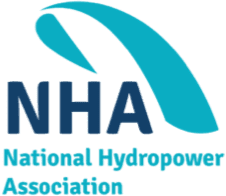- Show all
- Asset Management
- Buoy
- Canal
- Climate Change
- Controls
- Dam Safety
- Environmental Impact
- Fish and Aquatic Resources
- Future Grid
- Generator
- Governor
- Hydraulic Forecasting
- Hydraulic Optimization
- Hydrokinetic
- Intake Gates
- Markets
- Penstock
- Regulatory Process
- Renewable Integration
- Sediment Transport
- Shoreline and Riparian Resources
- Spillgates
- Tidal
- Transmission Services
- Turbine
- Water Management
- Water Resources
- Water Systems
- Wave
Marine Energy
AERC -Advancing Energy Resilient Communities (FY20 FOA Remote Community Led Test Campaign)
Lead Companies
Pacific Northwest National Laboratory
Lead Researcher (s)
- Simon Geerlofs
Technology Application
Marine Energy
Research Category
Interconnect Integration and Markets
Research Sub-Category
Future Grid
Status
ongoing
Completion Date
TBD
Conventional Hydro
Characterization of Hydropower Generation Attributes Relevant to Grid Reliability and Resilience [HydroWIRES]
Lead Companies
PNNL, INL, NREL, ORNL, ANL
Lead Researcher (s)
- Abhishek Somani, abhishek.somani@pnnl.gov
The U.S. power system is continuing to evolve both in terms of system composition, as well as the definition of and requirements for attributes related to reliability and resilience of operations. While conventional contributors to system reliability are being replaced by as-available and variable renewable energy resources, extreme events (e.g., man-made [cyberattacks] and natural) continue to afflict the power system on a more routine basis, causing damage and potential disruptions to the grid. Hence, the role of hydropower in meeting reliability and resilience needs will become even more important. This project will develop frameworks, evaluation methodologies, and tools to identify hydropower’s contribution to grid reliability and resilience. These methods will be demonstrated through various use cases representing a variety of future grid conditions and extreme event scenarios. The project will also provide insights into the specific operational and design attributes of hydropower resources that may need to be adapted to ensure that resources are best equipped to meet the power system’s reliability and resilience needs. Technology Application
Conventional Hydro
Research Category
Interconnect Integration and Markets
Research Sub-Category
Future Grid
Status
ongoing
Completion Date
TBD
Conventional Hydro
Marine Energy
Conventional Hydro
GMLC 6.1.1 Flex Power
Lead Companies
Sandia National Laboratories
Lead Researcher (s)
- Felipe Wilches
Emerging hybrid renewable energy systems offer 1) new opportunities for the global renewable energy industry with disruptive market potential, and 2) a scalable, economic, and reliable solution applicable to a power system of any size (e.g., large interconnected power systems, islands, microgrids). The project will result in development of a New National Asset – a grid-scale hybrid system test bed that can be used by the industry and research community for validation and demonstration of new control concepts, stakeholder engagement, workforce education, and as a validation platform for future standardization of hybrid technologies. It will lead to both technology and vendor neutral, “plug-and-play” hybridization guidelines and control architecture openly available at all segment of stakeholder community. This project proposes a pioneering approach to demonstrate how technology hybridization can fully leverage the value of variable utility-scale wind and solar PV generation in combination with hydro power generation to take them from a simple variable-energy resources to ones that provide dispatchability, flexibility and capacity services (similar to conventional power plants) and a full range of reliability and resiliency services (similar to or better than conventional plants) to the bulk power system. The project will demonstrate the ability of hybrid plants to operate in grid-forming mode and provide reliability and resilience services (black start, islanded operation) in a multi-MW scale system.
Technology Application
Conventional Hydro
Research Category
Interconnect Integration and Markets
Research Sub-Category
Future Grid
Status
ongoing
Completion Date
TBD
Marine Energy
Grid Value Proposition of Marine Energy
Lead Companies
Pacific Northwest National Laboratory
Lead Researcher (s)
- Jan Alam
PNNL and NREL are in the second year of a three-year project to comprehensively review the grid value for marine hydrokinetic development at scale on an intermediate- to long-term horizon. The project will dovetail with nationally-accelerating valuation efforts to characterize and quantify specific services from generating resources and estimate the value of those services over time. It will capitalize on the larger conversation and technical approach to establish locational value, referencing adopted frameworks and related laboratory analysis. And it will take advantage of laboratory expertise in a variety of disciplines – ocean physics, mechanical engineering , electrical engineering, energy economics – chained together in order to ensure that benefits and services assessed are realistic for MHK technologies and ocean energy resources.
Technology Application
Marine Energy
Research Category
Interconnect Integration and Markets
Research Sub-Category
Future Grid
Status
ongoing
Completion Date
TBD
Conventional Hydro
Hydropower Value Study [HydroWIRES]
Lead Companies
PNNL
Lead Researcher (s)
- Abhishek Somani, abhishek.somani@pnnl.gov
This project's main objective was to perform foundational work to understand recent trends in hydropower operations, future expected changes, and technical abilities of hydropower resources to adapt their operations in the future. The work products included a landscape review of the recent trends in provision of various power grid services by hydropower resources. The project was also designed to identify high-impact research questions to lay the foundation for future research. Learn more. Technology Application
Conventional Hydro
Research Category
Interconnect Integration and Markets
Research Sub-Category
Future Grid
Status
ongoing
Completion Date
TBD
Conventional Hydro
Hydropower’s Contribution to Grid Resiliency and Reliability
Lead Companies
PNNL
Lead Researcher (s)
- Abhishek Somani
This project will develop frameworks, evaluation methodologies and tools to identify hydropower’s contribution to grid reliability and resilience, especially in the seconds to hours’ time frame. These methods will be demonstrated in this project through various use cases and will be provided to industry as guidance for understanding and evaluating hydropower’s role in reliability and resilience of the evolving electric grid. The outcomes of this work will shed light on the critical role that hydropower will play in the future grid and improve understanding of hydropower’s role in providing different services to support grid resiliency.
Technology Application
Conventional Hydro
Research Category
Interconnect Integration and Markets
Research Sub-Category
Future Grid
Status
ongoing
Completion Date
TBD
Conventional Hydro
Hydropower’s Contributions to Grid Reliability and Resilience
Lead Companies
NREL, PNNL
Lead Researcher (s)
- Josh Novacheck
The U.S. electricity system is critical infrastructure that supports the economy, public safety, and national security. Although the U.S. power grid is very reliable according to standard metrics, there is an increased interest in resilience—the grid’s ability to respond to and recover from high-impact, low-probability events. These range from natural events, such as hurricanes, to human-related events, such as cyber and physical attacks. The impacts on system operations, and hence the responses needed by the system, can vary in magnitude, intensity, duration, and geography depending on characteristics of the extreme event. Hydropower facilities are often crucial in responding to these extreme grid events due to their agility and flexibility. They can quickly change both their real and reactive power outputs, and they are well-suited to provide voltage support, inertial response, primary frequency response, spinning, and operating reserves. Readily available conversion of stored energy—water stored behind dams—and low station power requirements make them ideal for black start restoration of the grid. Additionally, hydropower presently constitutes the power system’s largest portion of long-duration energy storage, which can act as a buffer during extended-duration system outages. However, no standard practices presently exist to quantify the contributions of hydropower resources and their attributes and response characteristics, especially for non-market and non-monetized grid services such as voltage support and inertial and frequency responses.
Technology Application
Conventional Hydro
Research Category
Research Sub-Category
Future Grid
Status
complete
Completion Date
2021
Conventional Hydro
Identifying Hydropower Operational Flexibilities in Presence of Streamflow and Net Load Uncertainty [HydroWIRES]
Lead Companies
University of California, Irvine
Lead Researcher (s)
- Soroosh Sorooshian, Soroosh@uci.edu
Hydropower plants have been traditionally designed and used for base-load bulk energy production, but technological developments and changes to grid needs are making flexible operation more prevalent. Still, hydropower’s flexibility capabilities and constraints are not well understood. The goal of this project is to develop an accurate model representation of hydropower operations that allows for a detailed specification of various constraints and captures the underlying uncertainty from both inflows and net load. Technology Application
Conventional Hydro
Research Category
Interconnect Integration and Markets
Research Sub-Category
Future Grid
Status
ongoing
Completion Date
TBD
Don’t see your waterpower research?
Have questions about WaRP?
Contact Marla Barnes at: marla@hydro.org



